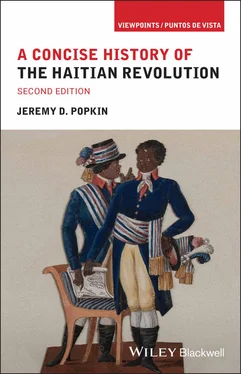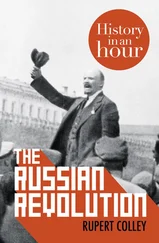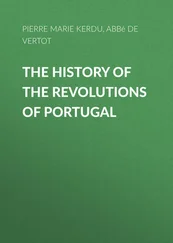Enslaved urban blacks tolerated their situation because they hoped to join the population of free people of color. This third racial category among the colony’s population had begun to develop soon after enslaved blacks were imported to the island. Many, but not all, of the free people of color were the offspring of sexual relationships between white masters and enslaved black women: throughout the colony’s history, there had always been many more white men than white women willing to leave Europe for the rigors of colonial life. White men routinely exploited enslaved black women for their sexual pleasure. Although the relationships between white men and women of African descent were profoundly unequal, white men often granted freedom to women who bore themchildren; the Code Noir explicitly authorized this practice. White women often resented their husbands’ involvement with women of color; in 1791, a French official had to intervene when a jealous white wife physically attacked an enslaved woman in whom she decided her husband was taking too much interest. 8
Populations of free people of color developed in all the American colonies, but in the course of the eighteenth century the group in Saint-Domingue came to be larger and more influential than in any of the other Caribbean colonies. Those free people of color who were descended from white fathers often inherited property, including enslaved blacks. Less averse to hard work than the whites, and less tempted by the prospect of leaving the colony for France, they were often more economically successful than the Europeans. Free people of color were essential to the running of the colony. Companies of free men of color were recruited to form the maréchaussée or rural police, used to hunt down runaway slaves, and entrepreneurs from this group ran many of the colony’s small businesses. White men sought out free women of mixed race, who legend claimed were more skilled at the arts of sex than whites; white women often complained that European men preferred their mixed-race rivals. Sex was not the only reason why white males linked themselves to these women, however. It was not uncommon for white men to leave the management of their property to energetic free women of color, known as menagères , who might or might not also be their mistresses; many of these women became the founders of prosperous families and sought to guide their children into advantageous marriages with other members of the free colored group or even with white men willing to cross the color line in order to improve their economic situation. Like the children of white couples, some children from mixed-race families were sent to France for their education.
As their numbers and wealth increased – by 1789 official statistics showed 28,000 free people of color in Saint-Domingue, almost as many as the 30,000 whites – members of this group increasingly resented laws that condemned them to second-class status. In 1685, the Code Noir had specified that freed blacks had “the same rights, privileges, and liberties enjoyed by persons born free,” and throughout the early part of the eighteenth century, there was little discrimination against them and their descendants in the colonies. From the 1760s onward, however, official policy and white colonists’ attitudes became increasingly prejudicial toward the free people of color. The French government calculated that maintaining a clear separation between whites and non-whites would prevent the colony’s free population from uniting to resist metropolitan authority. A series of laws attempted to limit new manumissions and banned free people of color from entering a long list of professions, including medicine and law, or from wearing fancy clothing and jewelry. Notaries drawing up legal documents had to use specific terms to identify them, and they were forbidden to use the family names of their white ancestors. In practice, many of these laws were often ignored, but free men of color were excluded from all government posts and from commanding military units. When the French Revolution broke out, they would be quick to seize on its promises of liberty and equality to demand the abolition of these restrictions.
Critics and Defenders of Slavery
In addition to the tensions generated by the slavery system and the conflicts between whites and the free people of color, Saint-Domingue in the years before 1789 was increasingly affected by new ideas coming from Europe and the newly independent United States. By the middle of the 1700s, some European thinkers were beginning to criticize slavery as an inherent violation of natural human rights. The idea of colonialism also came under fire. In 1770 the abbé Raynal’s Philosophical History of the Two Indies made a scathing denunciation of the effects of European settlement in the Americas. Subsequent editions of this best-selling work added vehement denunciations of slavery. One passage, written by the French philosophe Diderot, mentioned slave revolts in several colonies, warning that “these bolts of lightning announce the thunder,” and predicted that if slavery was not abolished, a black leader would soon “raise the sacred banner of liberty” and lead a movement to destroy the institution. 9Raynal’s book circulated freely in Saint-Domingue; it is often claimed that Toussaint Louverture had read it. Raynal himself had connections with royal administrators in charge of the colonies, and colonists feared that his ideas might influence official policy. Other critics challenged colonial policy on economic grounds, arguing that the cost of defending and administering overseas territories outweighed the profits they produced.
The French government’s actions during the decades before the revolution were confused and often contradictory. While some officials hoped to reduce the cruelty of slavery, others were more concerned about the possibility of blacks entering France itself. A 1777 edict, the police des noirs , expressed fears about racial mixing and set up a registration system meant to exclude blacks from the metropole. 10In Saint-Domingue itself, royal officials imposed new restrictions on the free population of color. The American Revolution added to the ferment under way in the New World. The conflict interrupted Saint-Domingue’s trade with Europe and its supply of new captives from Africa, reminding the colonists of their vulnerability to disruptions resulting from France’s foreign policy. White planters were alarmed when the French administration recruited free men of color to join a military expedition sent to besiege British forces in Savannah, Georgia, in 1779. Among the participants in this unsuccessful campaign were André Rigaud, who would later become Toussaint Louverture’s most important political rival, and a number of other figures who would play important roles in the events of the Haitian Revolution.
With the end of the American war in 1783, Saint-Domingue’s seemingly irresistible economic rise resumed. To make up for the cutoff of imported captives during the war, planters purchased record numbers of new African laborers, and a new wave of whites arrived from France. A decree in August 1784 opened Saint-Domingue’s major ports to trade with the newly independent United States. Eagerly welcomed by the colonists, this breach of the exclusif was bitterly opposed by French merchant interests. Although they appreciated the new trade law, the colonists were jolted when the French government issued ordinances on 3 December 1784 and 23 December 1785 intended to mitigate some of the worst abuses of the slave system. Masters and plantation managers were required to keep accurate records of the food and clothing provided to their slaves, and the provisions of the Code Noir allowing enslaved blacks to complain about mistreatment were restated. The colonists reacted violently to what they denounced as an example of metropolitan “despotism.” “This edict violates the sacred rights of property, and puts a dagger in the hands of the slaves, by giving control over their discipline and their regime to someone other than their masters,” one of them wrote. 11To silence this opposition, in January 1787 the French government shut down the Conseil supérieur, the main law court in Cap Français, and merged it with the court in Port-au-Prince. This measure further angered the white colonists, some of whom were ready to call for a revolt like the movement in 1768–9.
Читать дальше












